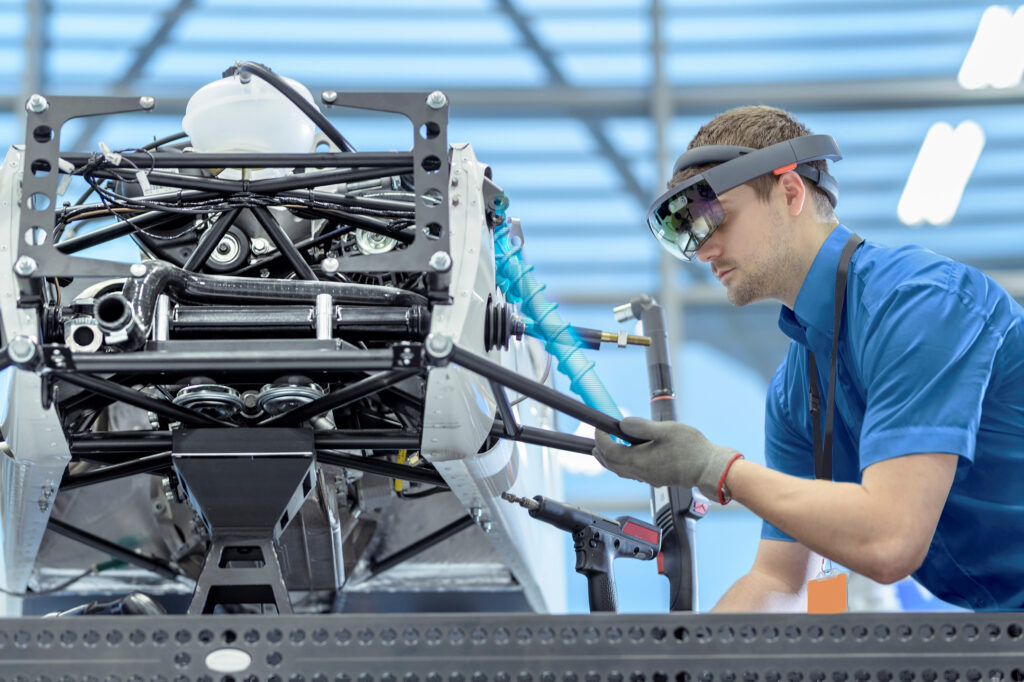Challenges and opportunities in the industry of tomorrow – Part 3 – A changing work environment

The industries of the world are facing a future of both uncertainty and potential. Supply chain disruption, sustainability, and an upheaval in the workforce are three major drivers of this uncertainty and disruption. Each of these challenges is connected, and each offers an opportunity for innovation and transformation, especially considering advancements in digital technologies.
In the final part of my short series on the challenges and opportunities facing companies tomorrow, we dive into the ongoing transition in the workforce around the industry. To read part one, click here, and click here for part two.

This workforce transition can be described by three trends. First, the most experienced employees at many companies are reaching retirement or moving into new roles either within or outside the company. As these employees leave, they take with them valuable knowledge and experience that, unless captured, will be lost.
Second, there is a shift in the skills or core competencies companies need, particularly towards advanced software and electronics, driven by the changing nature of products in many industries. This shift is creating a skill gap between the expertise of the current workforce and the skills demanded to create the next generation of products. This gap is widened by a highly competitive job market for these in-demand skills, which will make it difficult for many companies to staff new departments or otherwise increase their capabilities in these critical areas.
Third, the expectations and needs of prospective employees are changing. In addition to offering good pay and benefits, the most successful companies in the job market are also offering a technologically advanced workplace that matches the technology experiences of the next generation in their personal lives. These companies will also be able to stand on strong records of sustainability and corporate responsibility, making them highly desirable as employers.
Digital solutions aid workforce development
Addressing this dynamic workforce market will require a nuanced approach. Simply investing in the digitalization of processes without intention or strategy risks leaving employees behind as they attempt to learn new skills or adapt to new methods of completing tasks. It will be important for companies to strike a balance between modernizing for the sake of attracting new talent while not alienating current employees. Technology that is intuitive and easy to learn will help both new and current employees come up to speed more quickly.
AI/ML can play a part here as well. Today, engineering software incorporates AI to learn command patterns of the user. As the AI system learns, it is then able to suggest next commands based on steps the user has taken and actions they will likely wish to use next. Some companies have leveraged this technology to capture the patterns of their current employees to help train new hires. This strategy can help new employees learn and contribute at a much faster rate.
In other roles, an immersive training environment may be more valuable. Technicians and manufacturing employees can benefit from virtual training sessions conducted in the metaverse that offer a learning environment where mistakes are far less costly. AR and VR enable trainees to gain hands-on practice in virtual scenarios occurring in the metaverse that are safe and easy to repeat for efficient training sessions.

Lastly, as the flexibility to work from anywhere becomes increasingly important, the seamless experience and interoperability of service-based software delivery will be a boon to companies as they attract new talent, upskill existing employees, and seek to improve their productivity overall. SaaS deployment methods ensure that the software employees use every day remains up-to-date and interoperable with the tools being used by customers, suppliers, and partners. This will make it much easier for employees to do their jobs and support greater productivity across the company.
Digitalization overcomes uncertainty
Supply chain disruptions, a continued push for sustainable innovation, and a changing workforce will all contribute to another year of challenge and uncertainty. Yet, optimism should abound due to the increasingly powerful capabilities companies can leverage by embracing digitalization and integrating advanced technologies into their processes. These digital technologies will help companies to foster collaboration, gather and leverage data, and explore innovative solutions while saving time and money. With the benefits facilitated by these powerful tools, companies in all industries will be ready to seize the opportunities of tomorrow.
Siemens Xcelerator, the comprehensive and integrated portfolio of software and services from Siemens Digital Industries Software, helps companies of all sizes create and leverage a comprehensive digital twin that provides organizations with new insights, opportunities and levels of automation to drive innovation.
For more information on Siemens Digital Industries Software products and services, visit siemens.com/software or follow us on LinkedIn, Twitter, Facebook and Instagram. Siemens Digital Industries Software – Where today meets tomorrow.


